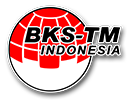Pengujian Rumah Pengering Daun Kelor Dengan Efek Rumah Kaca (Solar Dryer) Melalui Mekanisme Konveksi Alamiah
Aloysius V.P Piamat, Verdy A. Koehuan, dan Muhamad Jafri
Abstract
This research was conducted by experimental study of moringa leaf drying process using ultra violet plastic dryer house (UV solar dryer) through natural convection drying mechanism. The results showed that the final water content of moringa leaves after drying for two days (8 hours) was 54.88 %bb with a total drying rate of 0.417 kg/hour from the assumed initial water content of 80 %bb. While the average drying efficiency of 3.49 % with specific energy consumption (KES) is quite high, which is 127180.77 kJ/kg. The highest specific energy consumption (KES) occurred on the 2nd day test at 200056.37 kJ/kg with the lowest efficiency of 2.154 %, while the lowest KES on the 1st day test was 54305,17 kJ/kg with the highest efficiency of 4.83 %. This phenomenon is very clear the influence of changing environmental weather on the drying process in the drying house. Environmental weather is very influential on the process of drying moringa leaves with a natural convection mechanism using ERK type dryer. Cloudy weather with high humidity will increase the humidity in the dryer house through the water vapor content in the air that enters through the air ducts
Downloads
References
[2]. Yuwana, B.S & Silvia, E. 2011. Temperature and Realtive Humidity Gains of ”Teko Bersayap” Model Solar Dryer (a Research Note). Poceeding of The International Seminar: ”Exploring Rearch Potentials”. Palembang.
[3]. Abdullah K., Tahmrin, F.W & Wulandani, D. 1994. Optimasi Dalam Perencanaan Alat Pengering Hasil Pertanian Dengan Energi Surya. Laporan akhir penelitian hibah bersaing. Dapertemen Pendidikan Dan Kebudayaan IPB.
[4]. Fekawati, R. 2010. Uji performansi pengering efek rumah kaca hybrid tipe rak berputar pada pengeringan jamur tiram putih (Pleurotus ostreatus). Skripsi. IPB. Bogor.
[5]. Kamaruddin A. (1998). “Penerapan Energi Surya Dalam Proses Termal Pengolahan Hasil Pertanian”. Jurnal Keteknikan Pertanian, Vol 12 (1): 56 - 73.
[6]. Kurniasih. 2013. Khasiat dan Manfaat Daun Kelor. Pustaka Baru Press. Yogyakarta.
[7]. Integrated Taxonomy Information System. 2017. Moringa oleifera Lamk. Taxonomy Serial No: 503874.
[8]. Anwar, F., Latif, S., Ashraf, M. & Gilani, A.H. 2007. Moringa oleifera: a food plant with multiple medicinal uses. Phytother. Res. 21, 17-25.
[9]. Prajapati R.D., Murdia P.C., Yadav C.M & Chaudhary, J.L. 2003. Nutritive value of drumstick (Moringa oleifera) leaves in sheep and goats. Indian Journal of Small Ruminants. (2):136-137.
[10]. Tie, J., Jianga, M., Lia, H., Zhanga, S & Zhangb, X. 2015. A Comparison Between Moringa Oleifera Seed Presscake Extract Andpolyaluminum Chloride In The Removal Of Direct Black 19 Fromsynthetic Wastewater Industrial Crops and Products. Pakistan Journal of Nutrition. 74: 530–534.
[11]. Krisnadi A.D. 2015. Kelor Super Nutrisi. http://www.Kelorina.com. [19 Agustus 2017].
[12]. Simbolan, J.M. & Katharina, N. 2007. Cegah Malnutrisi dengan Kelor. Kanisius. Yogyakarta.
[13]. Verma, A.R., Vijayakumar, M., Mathela, C.S & Rao, C.V. 2009. In vitro and in vivo antioxidant properties of different fractions of Moringa oleifera leaves. Journal Toxicol. 47:2196–2201.
[14]. Foild, N., Makkar H.P.S & Becker. 2007. The Potential Of Moringa Oleifera for Agricultural and Industrial Uses. Dar Es Salaam. Mesir.
[15]. Mahmood, K.T., Tahira. M., & Ikram, U.H. 2011. Moringa oleifera: a natural gift-A review. Journal of Pharmaceutical Sciences and Research 2 (11): 775-781.
[16]. Shah. M. A., Bosco, S.J.D., & Mir, S.A. 2015. Effect of Moringa oleifera leaf extract on the physicochemical properties of modified atmosphere packaged raw beef. Food Packaging and Shelf Life, 3, 31–38.
[17]. Roheim, A.R. 2015. Strategi Pengembangan Dan Nilai Tambah Pada Agroindustri Tanaman Kelor Pt. Pusaka Madura Di Kecamatan Bluto Kabupaten Sumenep. Skripsi. Fakultas Pertanian, Universitas Jember.
[18]. Aminah, S., Ramdhan, T & Yanis, M. 2015. Kandungan Nutrisi dan sifat Fungsional Tanaman Kelor (Moringa oleifera). Buletin pertanian perkotaan. 5(2): 35-44.
[19]. Syarif, A., Muhammad, F., & Darimiyya, H. 2014. Efektivitas Ekstrak Biji Kelor (Moringa oleifera) Sebagai Sifat Antimikrobia. Proseding Seminar Nasional.Optimalisasi Potensi Hayati Untuk Mendukung Agroindustri Berkelanjutan.
[20]. Santoso, B.B., Arya I.G.P.P & Soemenaboedhy, S.I.N.Y. 2017. Pembibitan Tanaman Kelor Moringa oleifera L. Arga Puji Press. Mataram Lombok.
[21]. Mitsui. 1997. New Cosmetic Science. Elsevier Science. New York.
[22]. Agrowindo. 2015. Peluang Usaha Budidaya Daun Kelor Dan Analisis Usahanya. http://www.agrowindo.com/peluang-usaha-budidaya-daun-kelor-dan-analisa- usahanya.htm [12 Oktober 2017].
[23]. Litbang Pertanian. 2017. Pedoman Umum Budidaya Pertanian di Lahan Pegunungan http://www.litbang.pertanian.go.id/regulasi/one/12/file/BAB-V.pdf. [13 Oktober 2017].
[24]. Yayat, R. 2015. Sebaran Suhu pada Pengering Surya Efek Rumah Kaca (ERK) Tipe Kabinetdalam Proses Pengeringan Komoditi Pertanian. Skripsi. Universitas Sultan Ageng Tirtayasa.
[25]. Suhendra., Feby, N. 2017. Rancang Bangun dan Uji Kinerja Pengering Tipe Efek Rumah Kaca Dengan Saluran Pengarah Udara Panas. Jurnal Rona Teknik Pertanian. 10 (2): 45-55.
[26]. Wijaya, A. 2007. Uji Unjuk Kerja Mesin Pengering Tipe Efek Rumah Kaca (ERK) Berenergi Surya dan Biomassa Untuk Pengeringan Biji Pala (Myristica sp.). Institut Pertanian Bogor.
[27]. Hall, C.W. 1980. Drying and Storage of Agricultural Crops. AVI Publishing Company.Inc. Westport, Connecticut.
[28]. Holman, J.P. 1995.Perpindahan kalor, Edisi ke Enam. Erlangga. Jakarta.
[29]. Maulana, E. 2017. Perancangan Alat Pengering Biji Kakao Tipe Rotari Sederhana Pada Usaha Mandiri Di Desa Wiyono, Kabupaten Pesawaran Skripsi. Universitas Lampung.
[30]. Ferdiansyah, Hadi. 2003. Kinerja Sistem Pengering Tipe Efek Rumah Kaca Dengan Mekanisme Penggetaran. Skripsi. Institut Pertanian Bogor.
[31]. Taufan, A., Karim, M. A., Novrinaldi, S. A. P., Haryanto, A., Pramono, E. K., & Hanifah, U. (2020). Studi Eksperimental Dan Model Matematika Pengeringan Daun Kelor (Moringa Oleifera) Dengan Empat Tipe Pengeringan, Jurnal Riset Teknologi Industri. Vol. 14, No. 02.

 Aloysius V.P. Piamat(1)
Aloysius V.P. Piamat(1)



